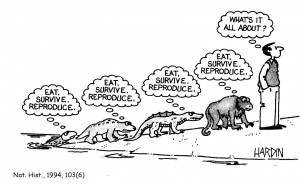Understanding and Automating Your Marketing Funnel
 When you’re getting ready to work out your marketing automation plan, understanding and automating your marketing funnel is one of the most important things you can do. Many companies see ads for larger marketing automation companies and get excited, expecting a miracle solution to come in that will completely revitalize their business.
When you’re getting ready to work out your marketing automation plan, understanding and automating your marketing funnel is one of the most important things you can do. Many companies see ads for larger marketing automation companies and get excited, expecting a miracle solution to come in that will completely revitalize their business.
Is a marketing automation company capable of some miracle work? Absolutely. You’ll be able to track signs that customers are ready to buy and spend time on leads that truly hold the promise of closing. But at the end of the day, if you aren’t ready to nail down what your sales process actually is, marketing automation isn’t going to work as well as you’d like it to – no matter which company you go with or what methodology you put into place.
Identifying Your Sales Funnel and Sales Cycle
A sales funnel isn’t a finite thing – every business has its own process and sales cycle – but any business that identifies prospects and sells goods or services has a sales cycle, and therefore a sales funnel. Just like your common hardware-store funnel, the top of the sales funnel is wide – meaning, leads get to you in a variety of ways.
As you engage leads through your funnel, the way you focus them on your products and services tends to become sharper. You want leads to understand your true value, to think about you when an opportunity for purchase comes along, and to refer you to friends and family for future sales of your products and services. For that reason, your sales funnel doesn’t actually have an end if you have the types of products that can be re-purchased.
The length of your sales cycle determines how you set up your marketing automation. If you’re selling a larger ticket item, it’s possible that clients could spend weeks or months in your sales funnel as opposed to just a few days. It’s common sense – a new home is a lifetime purchase, but a product you see on an infomercial is something you might buy in just a few seconds. A Realtor doesn’t necessarily advertise on television – they put themselves out there via word of mouth, billboards, magazine and internet ads and signs put up in front of houses because a house is an infrequent purchase. A Realtor relies on the fact that most families will purchase only once or twice in their lifetimes, so it’s important to get their name out there rather than to encourage a quick sale.
Automating the Funnel
Take the time to determine what the different steps are in your funnel. See one of our top articles on Sales Pipeline Stages to learn more about typical stages in the funnel. How do people get to your brand and therefore into your funnel? Once they’re in there, how do you manage leads and identify which ones have true potential to close? For customers who aren’t read to buy, how can you further engage to get them to buy, and how can you track the results of your engagement? Do you reach out to customers once they’ve been sold to, or do they leave your radar – and therefore your funnel?
Marketing automation software like Lead Liaison helps you not only automate the above process, but you can also track metrics to get an idea of your overall marketing effectiveness. Marketing automation can definitely change the way your company closes leads and engages leads in your funnel.
Some marketing automation companies leave you to figure out your sales cycle and sales funnel yourself. At Lead Liaison, we’re happy to look over your processes to find out how best to automate your sales and marketing funnel. For more information, contact us today!











